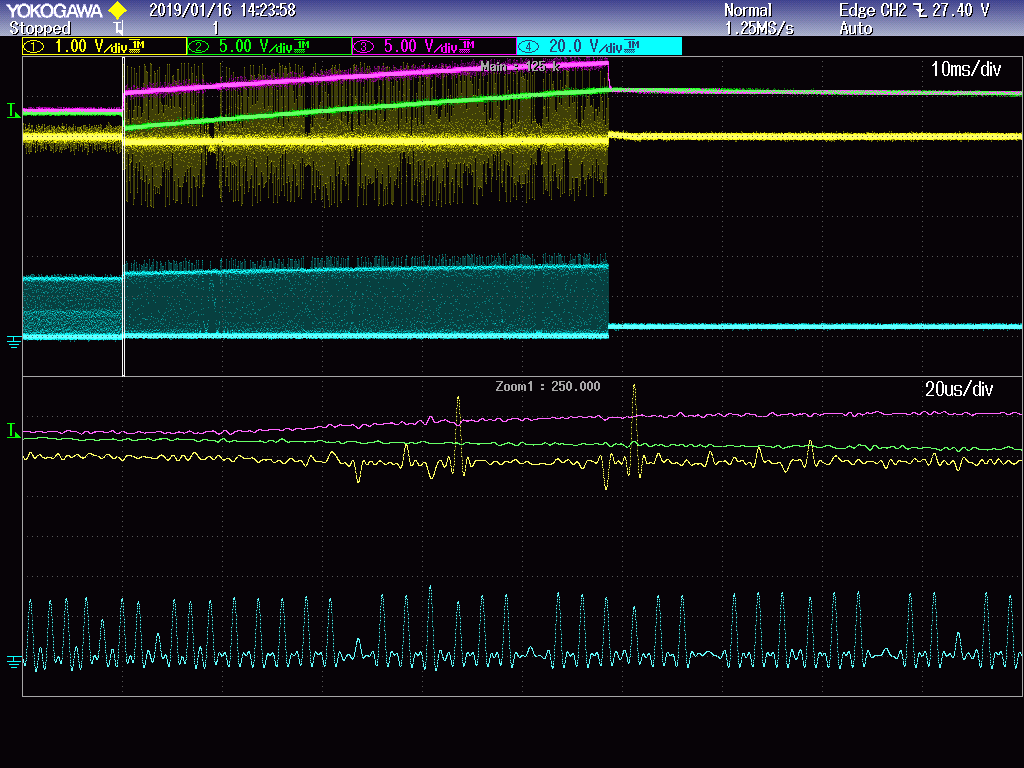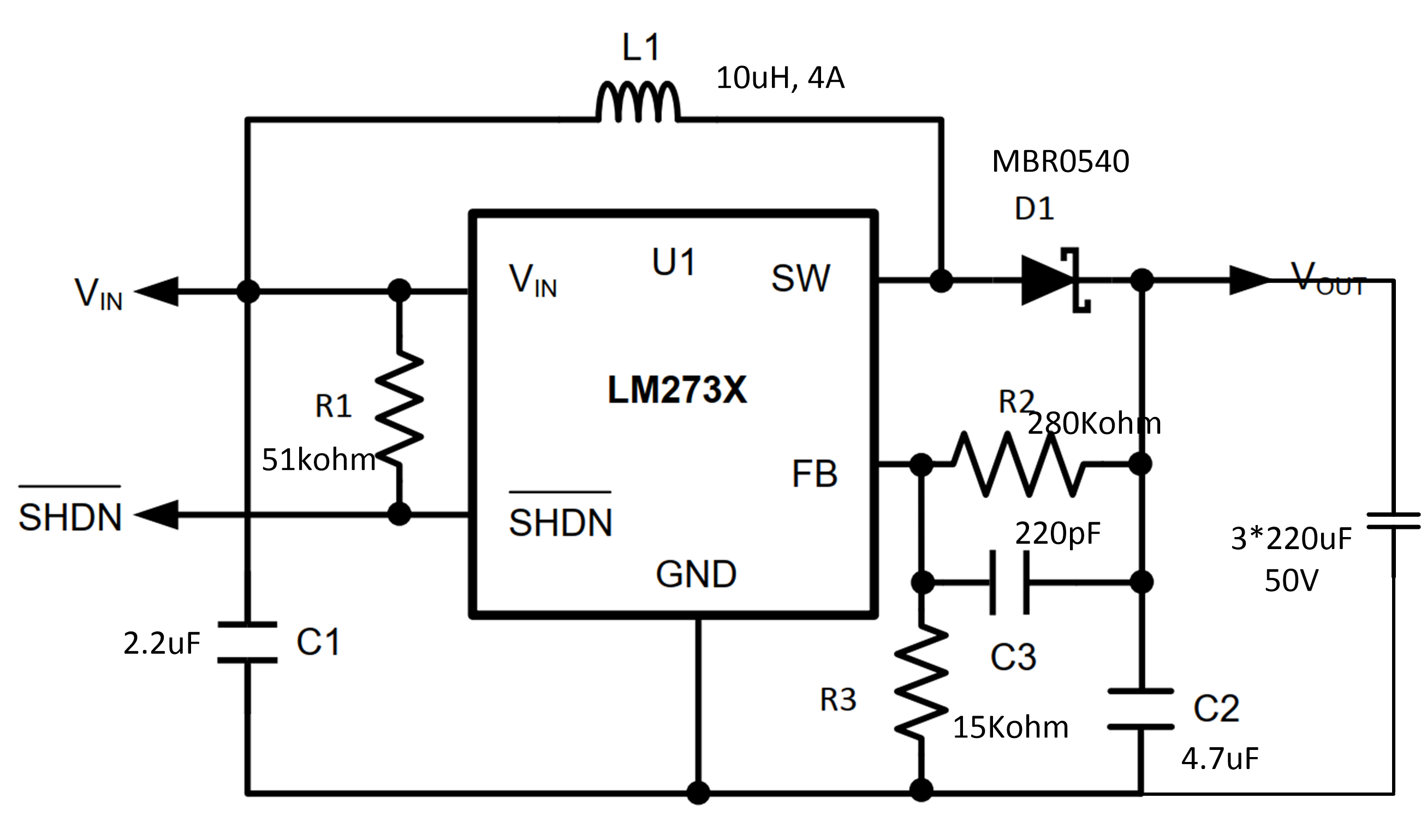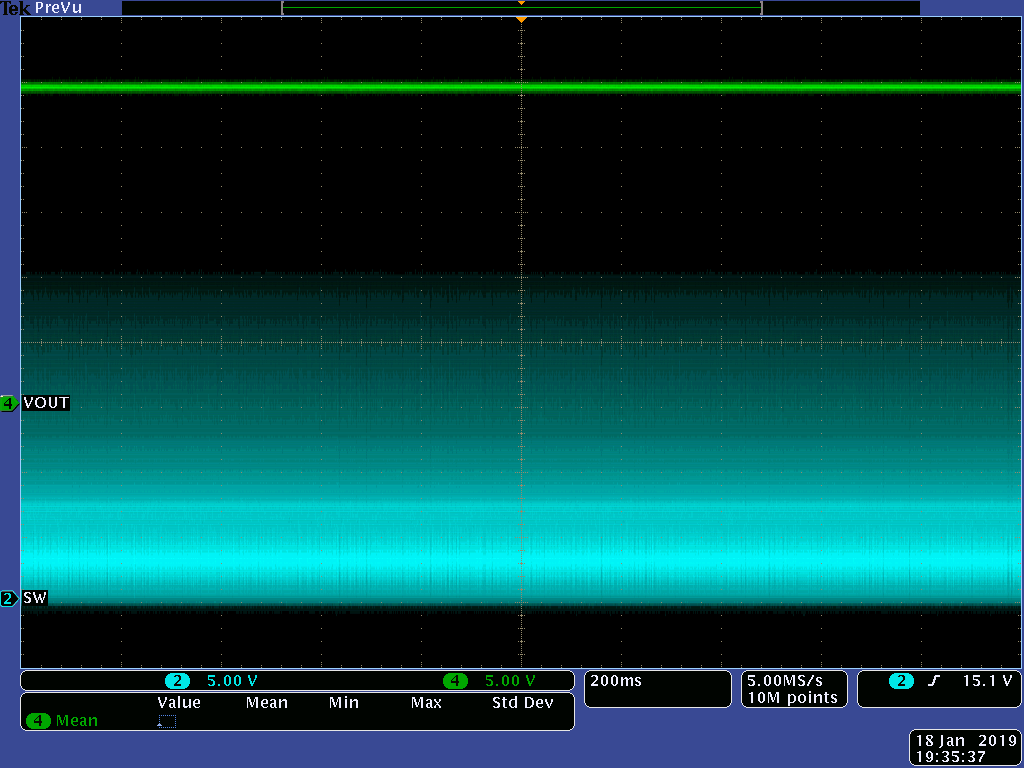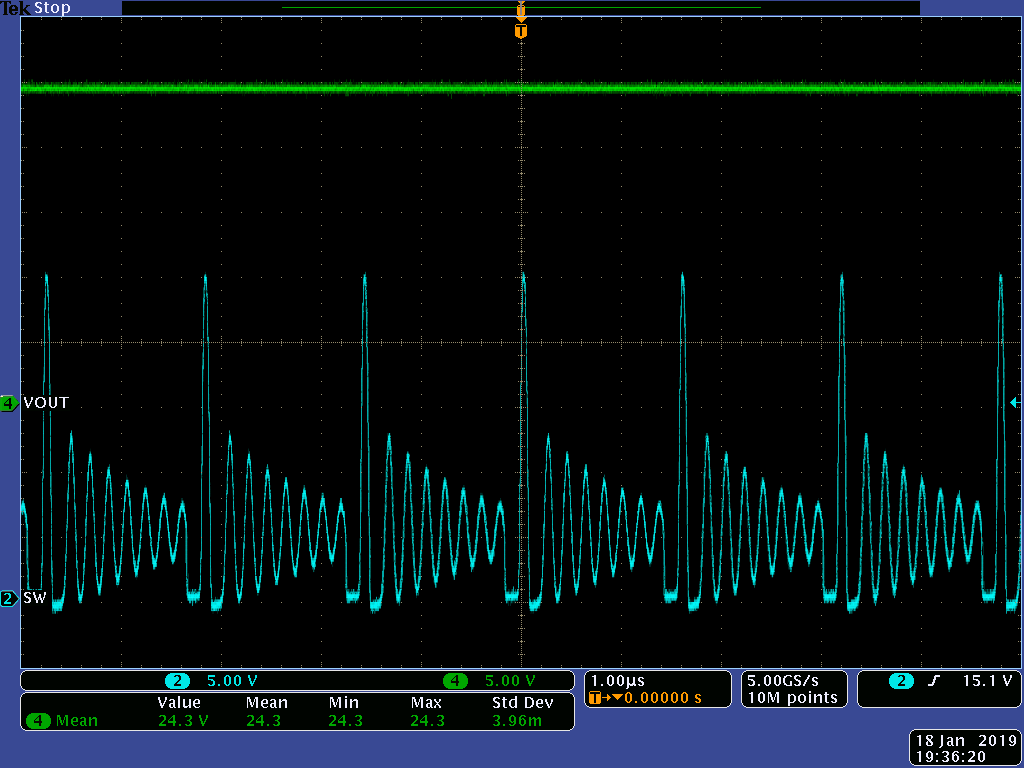The converter runs without load at normal operation (load are single pulses). When I connect a 680 uF Electrolyt-C at the output, the output begins to oscillate with ca. 4 V / 2 Hz as seen in the KO picture. The oscillating stops when I connect a KO Sonde (13.5 pF / 10 MOhm) at Pin SW of the LM2733. But replacing the KO-Sonde with a ceramic C with 13.3 pF to GND do not help, either not in combination with a 10 MOhm to GND. The oscillation also stop when I connect a piece of wire to pin SW which I hold in my fingers (the 'magic finger effect'...).
-
Ask a related question
What is a related question?A related question is a question created from another question. When the related question is created, it will be automatically linked to the original question.





 fffff
fffff ff
ff

